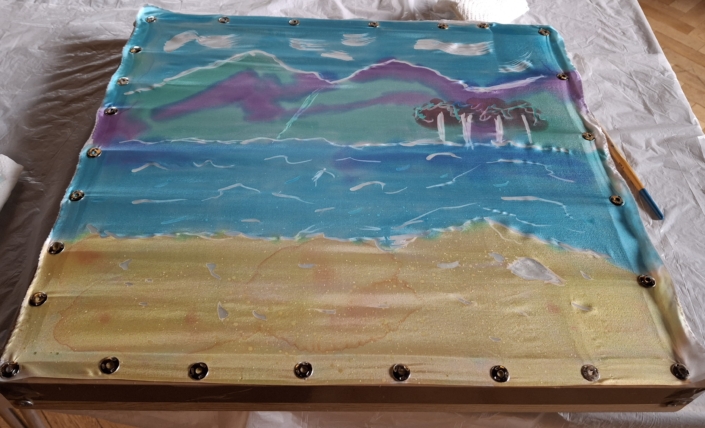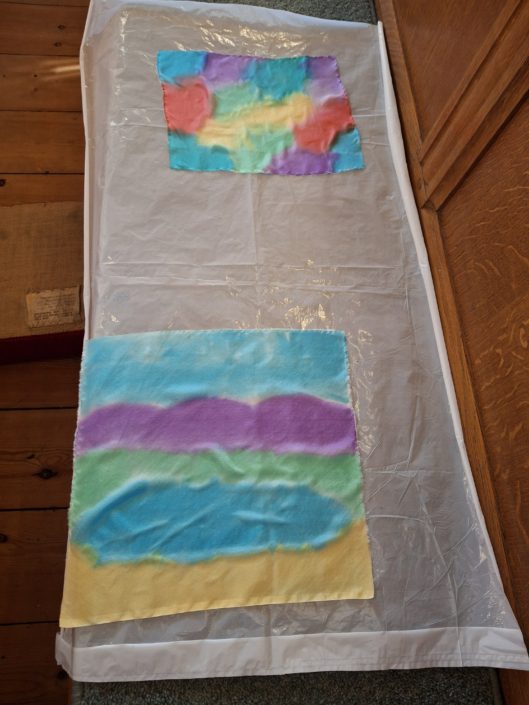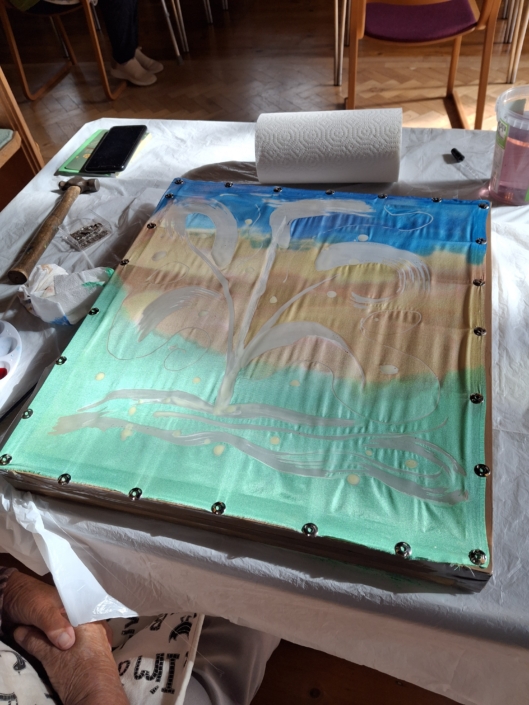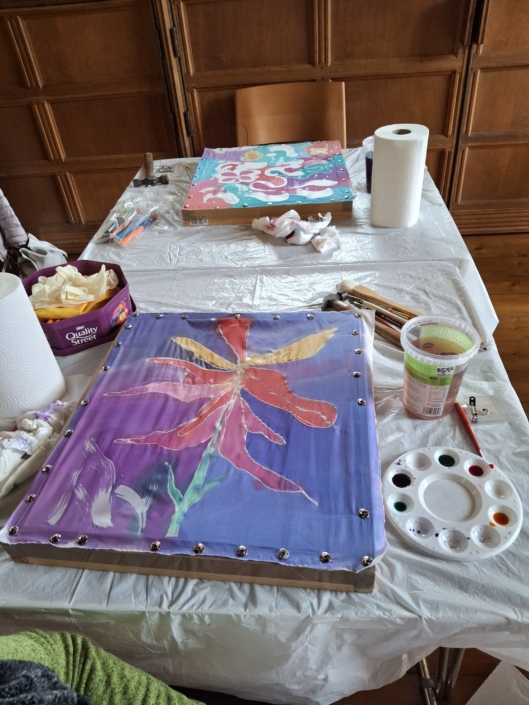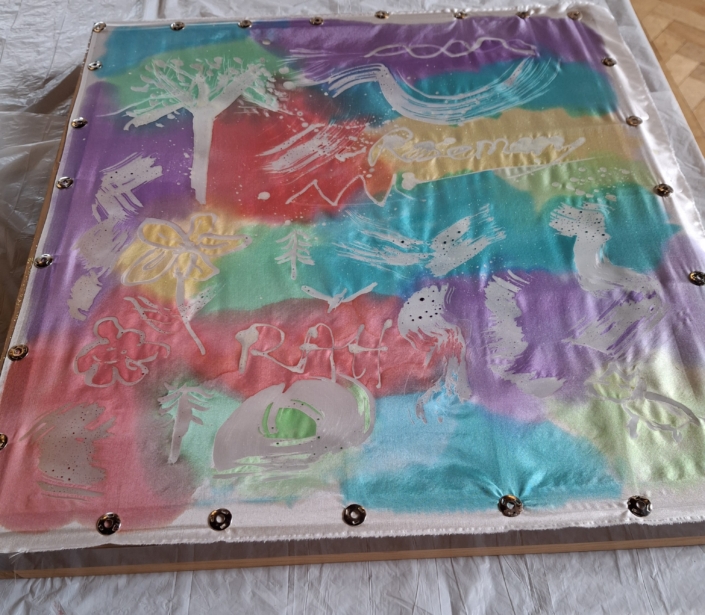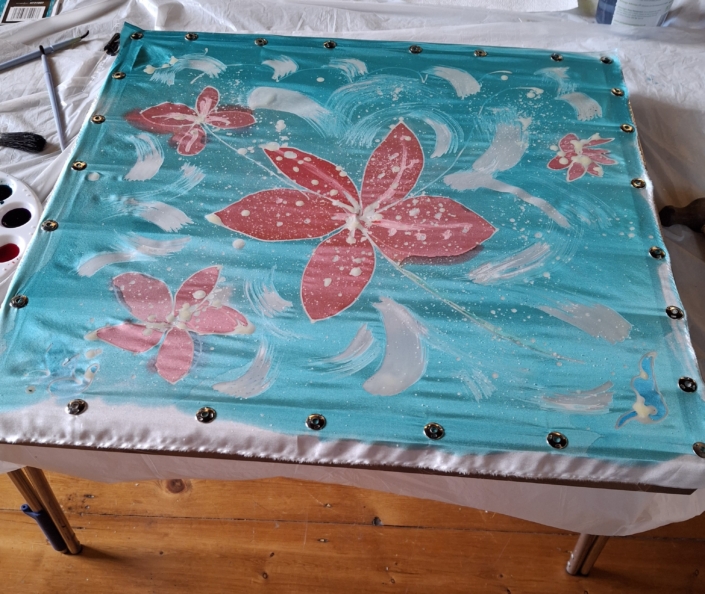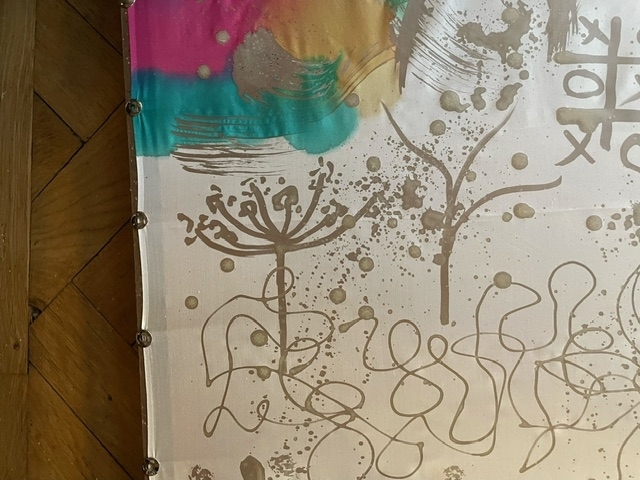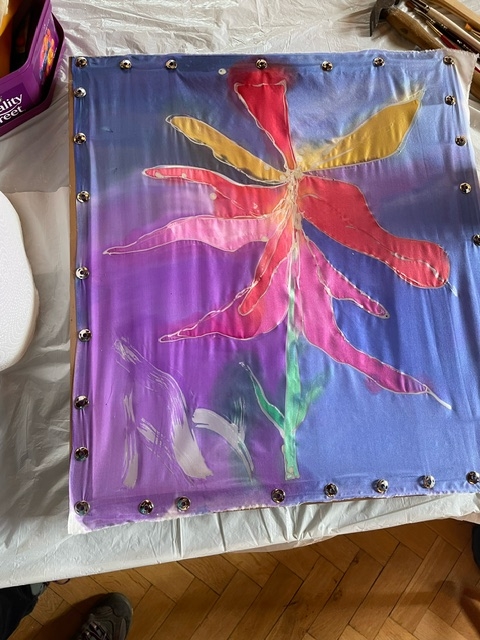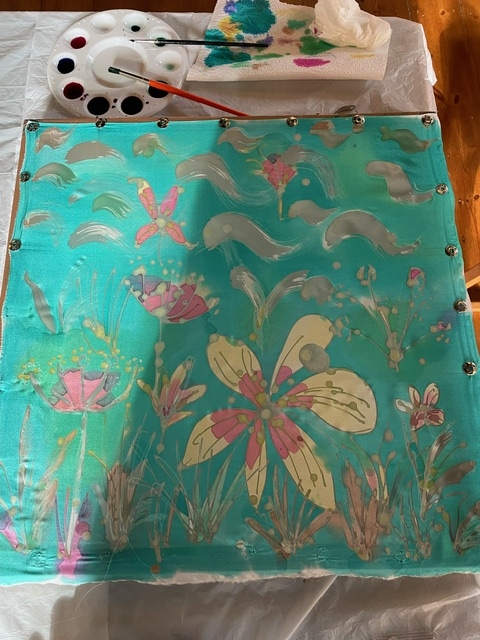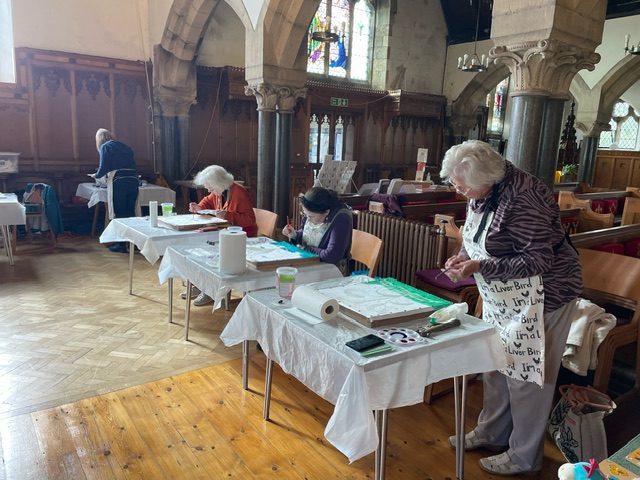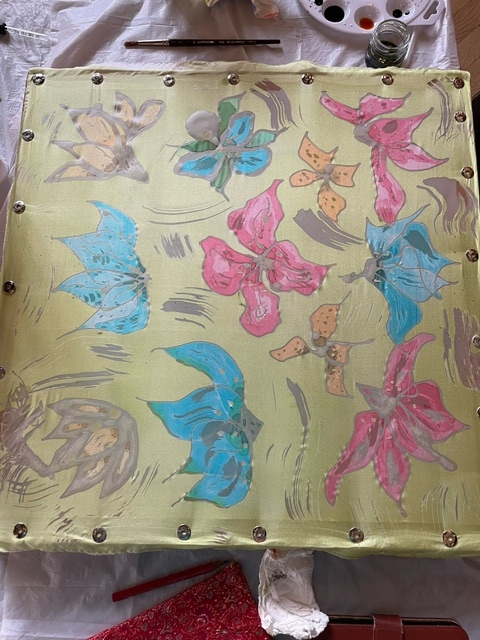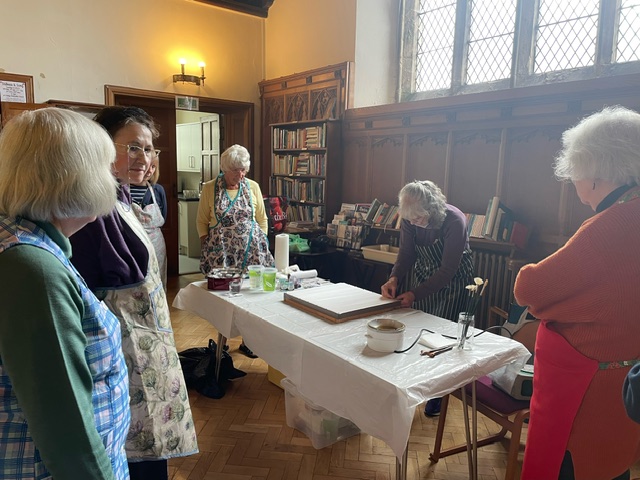A day of colours and silk
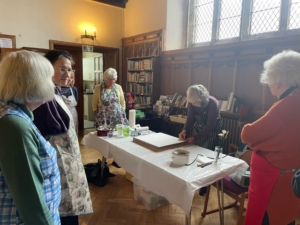
A day of colours and silk
Following her fascinating talk and demonstration earlier in the year on the art of painting on silk, Margaret Wilmot kindly offered to arrange a workshop for those who of us who would like to have a go ourselves. So it was that on the last Saturday of September, nine enthusiastic learners gathered in St Paul’s for a lovely day of playing with colours and silk.
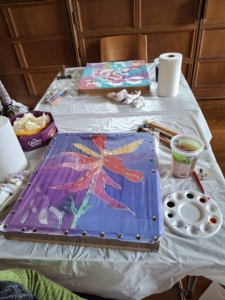 Margaret began by showing us how to apply the paint (which could more accurately be described as dye) to the silk fabric with a brush, creating patches of different hues blending into one another. She explained that the dyes she uses have to be fixed by steaming the finished work: although dyes are available that can be fixed by simply ironing over the silk, the steam-fix dyes produce more vibrant colours, and do not affect the texture of the silk.
Margaret began by showing us how to apply the paint (which could more accurately be described as dye) to the silk fabric with a brush, creating patches of different hues blending into one another. She explained that the dyes she uses have to be fixed by steaming the finished work: although dyes are available that can be fixed by simply ironing over the silk, the steam-fix dyes produce more vibrant colours, and do not affect the texture of the silk.
It was then our turn to try it for ourselves, and it was interesting to see the range of different colour combinations that everyone chose. For our second practice piece, we were shown how to experiment with sprinkling salt over the surface of the silk while the dye was still wet: this causes the dye to be drawn towards the salt crystals, creating interesting patterns depending on whether course or fine salt is used.
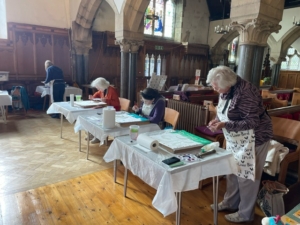 In the afternoon, Margaret demonstrated how to apply hot wax to the silk, using brushes and a special Javanese tool called a tjanting, in a technique similar to batik. The wax acts as a resist: this means that when the colour is subsequently applied, the areas of the silk that were covered by the wax remain undyed, leaving the fabric white. (The wax itself is ultimately removed when the piece is steamed.) We were also shown how, once the dye is dry—with the aid of a hairdryer on a cool setting, so as not to melt the wax—the design can be built up by adding more wax and more dye.
In the afternoon, Margaret demonstrated how to apply hot wax to the silk, using brushes and a special Javanese tool called a tjanting, in a technique similar to batik. The wax acts as a resist: this means that when the colour is subsequently applied, the areas of the silk that were covered by the wax remain undyed, leaving the fabric white. (The wax itself is ultimately removed when the piece is steamed.) We were also shown how, once the dye is dry—with the aid of a hairdryer on a cool setting, so as not to melt the wax—the design can be built up by adding more wax and more dye.
This was followed by an opportunity to attempt this ourselves. As might be imagined, molten wax is not the easiest substance to control, and on the first go I managed to spill the wax all over my silk—not the effect I was aiming for! But, of course, it didn’t matter as it was only a practice piece, and I managed to avoid making the same mistake with my fourth (and final) piece of silk.
At the end of the workshop, Margaret gathered up all of our masterpieces to be taken away and steamed. She explained that she doesn’t put on many workshops because so much work goes into preparing them: it was easy to see that this was indeed the case, and we were privileged that she ran one especially for us.
Prudence Dailey

